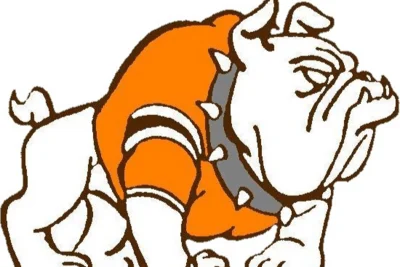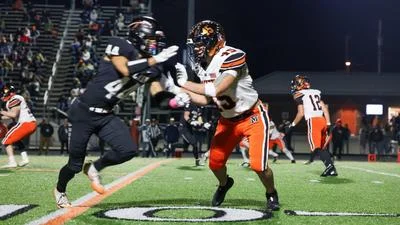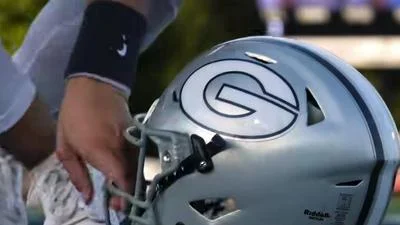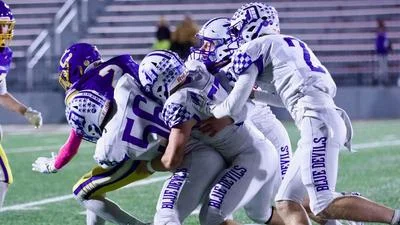Let’s talk the trade deadline.
The Major League Baseball trade deadline is Aug. 1, and “experts,” fan bases online and both devout and casual fans delight in weighing in on what their team needs to do to make a run at the World Series.
Many fans support getting every big name out there, regardless of salary or what the opposite team wants in return. It makes sense to strengthen your team whenever you can. At trade deadline, with two months left in the season, it is time to fish or cut bait, and if you are going to fish, you had better fill your needs with upgrades now, as there is no tomorrow. Fans don’t like facing the sad reality of their team packing it in for the season and maybe even trading one of their favorite players for a prospect or two, but calling an end to competitiveness for the season may be the smarter move. And even if management decides to sell, that doesn’t mean that the remaining players have given up. Most will still lay it all on the line each game, and often, after a team’s fire sale, the rest of the team steps up and provides better results than before the trades.
But to those teams and their fans, who are still in the hunt for October, what makes sense and what doesn’t? Generally, fans want their teams to go for the gold and obtain the headline player, no matter the cost. Fans do not like inaction or acquiring lesser players.
But from a management perspective … can the team make a REAL run at the championship by getting a few pieces? If so, will it mortgage the future and wind up with nothing to show for it? Mortgaging the future can include being stuck with long-term big-money contracts, or giving up young players for a “rental” – a player who may only be on the roster for two months before becoming a free agent.
Dealing talented minor league prospects that might have been the future foundation of a team for years to come drains a team’s ability to build from within and develops low morale and frustration within fans, as well as sub-major league operations and athletes. If the team used draft choices and trades over the years to fill its minor leagues with athletes they believe could be stars, or at least contributors in the majors, and deplete that system, it is years wasted. These prospects are players who have upsides that, if reached, could turn the big club into a championship contender. Dealing them for a one-shot chance to win is only successful if the dealing team wins and the traded prospects fail to develop into impact players. However, past results seem to lean toward making the trade and getting the accomplished star now, as most prospects turn into suspects down the road.
Big names drawing interest and who could be moved include Shohei Ohtani, Juan Soto and Max Scherzer. Some potentially available pitchers are Justin Verlander, Lucas Giolito, Jordan Montgomery, Josh Hader, Marcus Strohman, Blake Snell, James Paxton, Jack Flaherty, Shane Bieber and Dylan Cease. Some position players who could be on the move include Nolan Arenado, Cody Bellinger, Paul De Jong, Jeimer Candelario, Lane Thomas, Yasmani Grandal and Randal Grichuk.
But often, the best deals and the best deadline performers are below blockbuster status.
I am not convinced Ohtani is for sale. He is the player of a generation, a player of historical talent. But what would it cost to get him? He will be a free agent after the season. It would be a high price to have him for two months, but if your team is close, maybe he is the piece that could make a real difference. If you are three or four pieces away … stay away.
Let’s look at this year’s top teams, contenders and pretenders and talk about a few of them.
Dodgers: Need arms and tweaks. Go for Ohtani as a free agent after the season.
Braves: Small tweak, or if it ain’t broke, don’t fix it.
Orioles, Rays, Jays, Brewers, Reds, Diamondbacks, Giants: One or two deals to put them in competition for the World Series.
Twins, Guardians, Phillies, Marlins: In the hunt, but too many holes.
Mariners, Red Sox, Astros: They all need several moves.
Yankees: Too many holes to fill – small moves now, try for Ohtani next year.
Angels, Mets: Time to sell.
Padres: Sell or keep and build in the offseason?
Everyone else: Sell and build.
Now, even if a trade is made between the time this column was written and the time you read it, the concepts remain in force. Logic says that you don’t sell off your prospects for one player, when you have three to five holes, especially if you are a team that is either out of the playoffs or barely in. Logic suggests that if your team is short of elite status, you don’t make the trades for rentals or short-term solutions. You wait and either trade in the off-season for at least a full year of control, or you bite the money bullet and sign free agents as well as developing your minor league talent with a chance for them to make the roster. In that way, you fill the holes and start fresh, while giving up the least and keeping your developing talent. Of course, most fans don’t want to hear that. Most fans want their team to go for it every time.
Every trade carries risk. Some deadline deals capture lightning in a bottle and work out well. Many do not. For every C.C. Sabathia trade to the Indians for four prospects who did little later – Sabathia went 11-2 – and Hall of Famer Fred McGriff to the Braves for three unspectacular prospects, there are tons of trades that do little to improve the acquiring team. And while most prospects don’t pay off, if your team lets go of one of the few that make an impact, that ignominious deal will be talked about forever.
What approach would you take as GM? Trade now for one long shot to win, or shore up your team for the future, developing young players to propel the team to the promised land? And on the other side, if your team is out of contention, do you trade your best big-money players who have not garnered a pennant run for a carload of young talent to build on? Or do you keep your old favorite as a cornerstone to rebuild on? Let me know your strategy. Contact me at mike.blake@mountvernonnews.com.







